Japanese adjective behaves differently than English adjective which we are familiar with. But these are all you need to know about it.
We all know how important verb conjugation is in Japanese. In fact, adjective also conjugate.So the first important things to know is how to conjugate these adjective.
For now, just remember that there are 2 types of adjectives (い-adjective and な-adjective) and the rules to conjugate them are different.
…………………………………………
BASIC CONJUGATION RULES FOR JAPANESE ADJECTIVE:
You need to conjugate to show the [negative/positive] and [current-future/past] state of an adjective.
HOW TO CONJUGATE I-ADJECTIVE
Check out how to conjugate い-adjective such as 早い (hayai: fast) below

Here’s some example to show you how I-adjective conjugation works in a sentence:
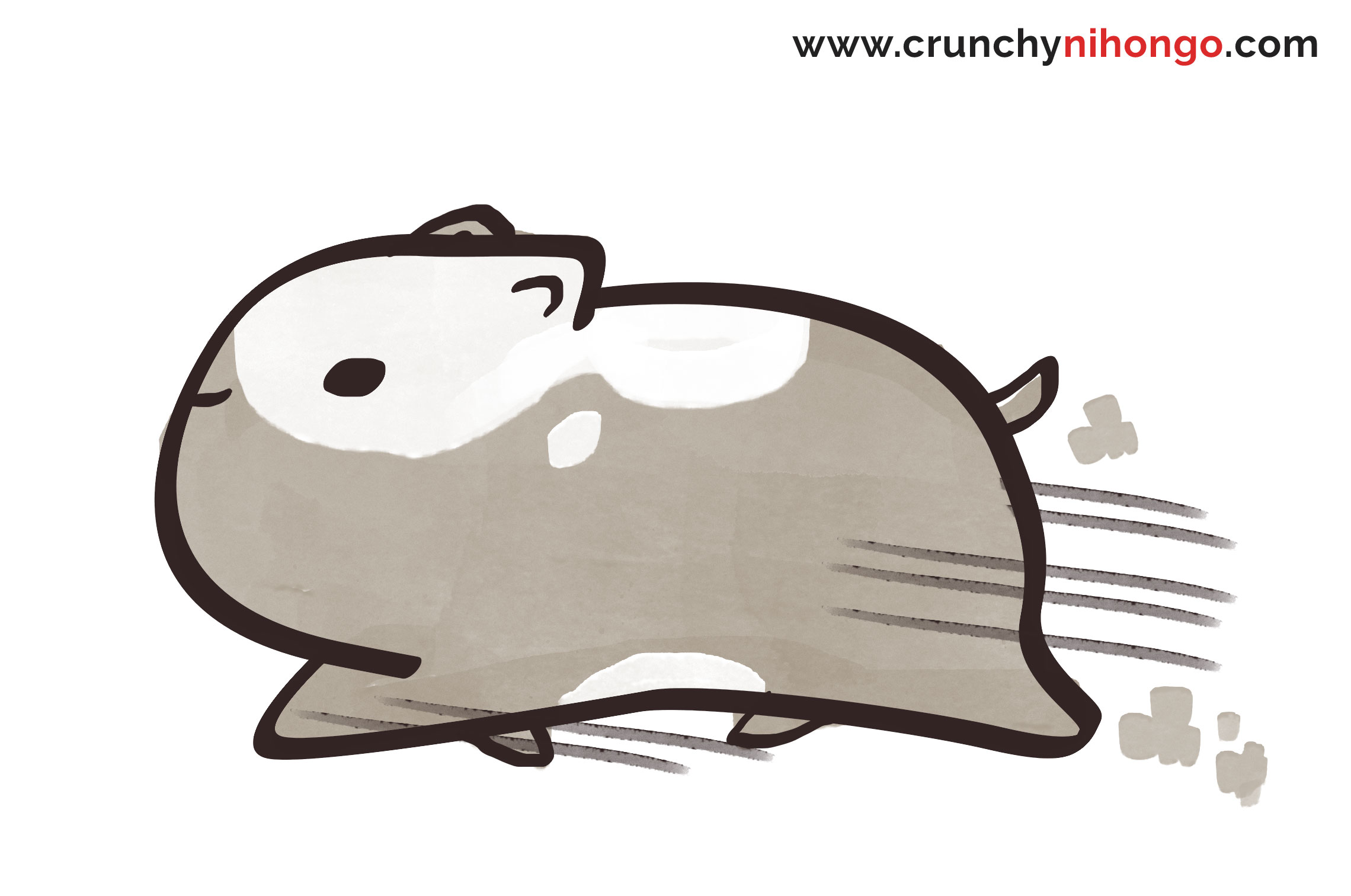
(present)
そのモルモットは早いです
Sono Morumotto wa hayai desu
That Guinea Pig is fast
(past)
そのモルモットは早かったです
Sono Morumotto wa hayakatta desu
That Guinea Pig was fast (past)

(present-negative)
そのモルモットは早くないです
Sono Morumotto wa hayakunai desu
That Guinea Pig is not fast (negative)
(past-negative)
そのモルモットは早くなかったです
Sono Morumotto wa hayakunakatta desu
That Guinea Pig was not fast (negative-past)
*all sample sentence are written as formal/polite version. To make it informal, you can drop the です.
…………………………………………
HOW TO CONJUGATE NA-ADJECTIVE
Check out how to conjugate な-adjective such as きれい (kirei: beautiful) below
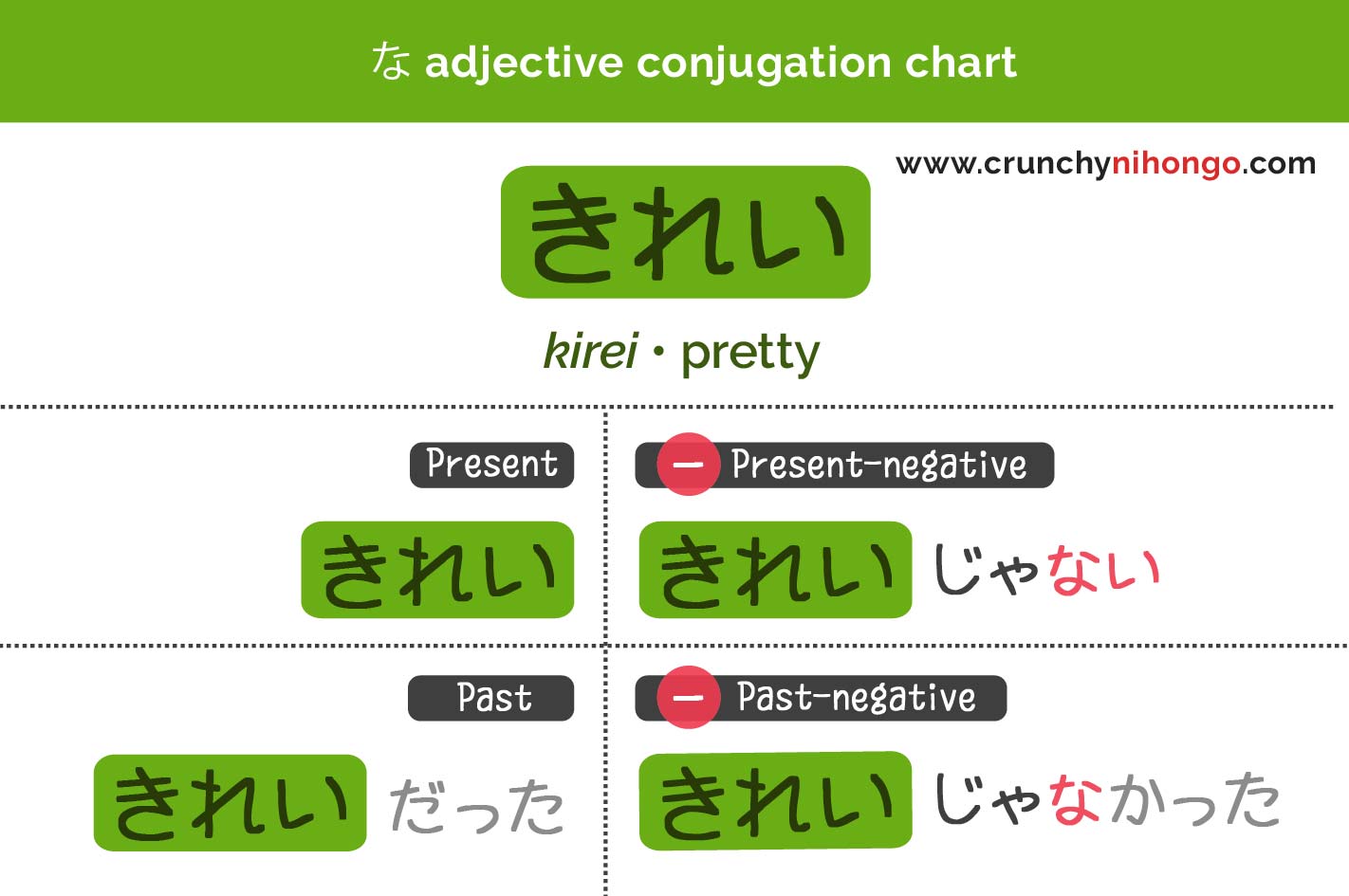
Here’s some example to show you how na-adjective conjugation works in a sentence:
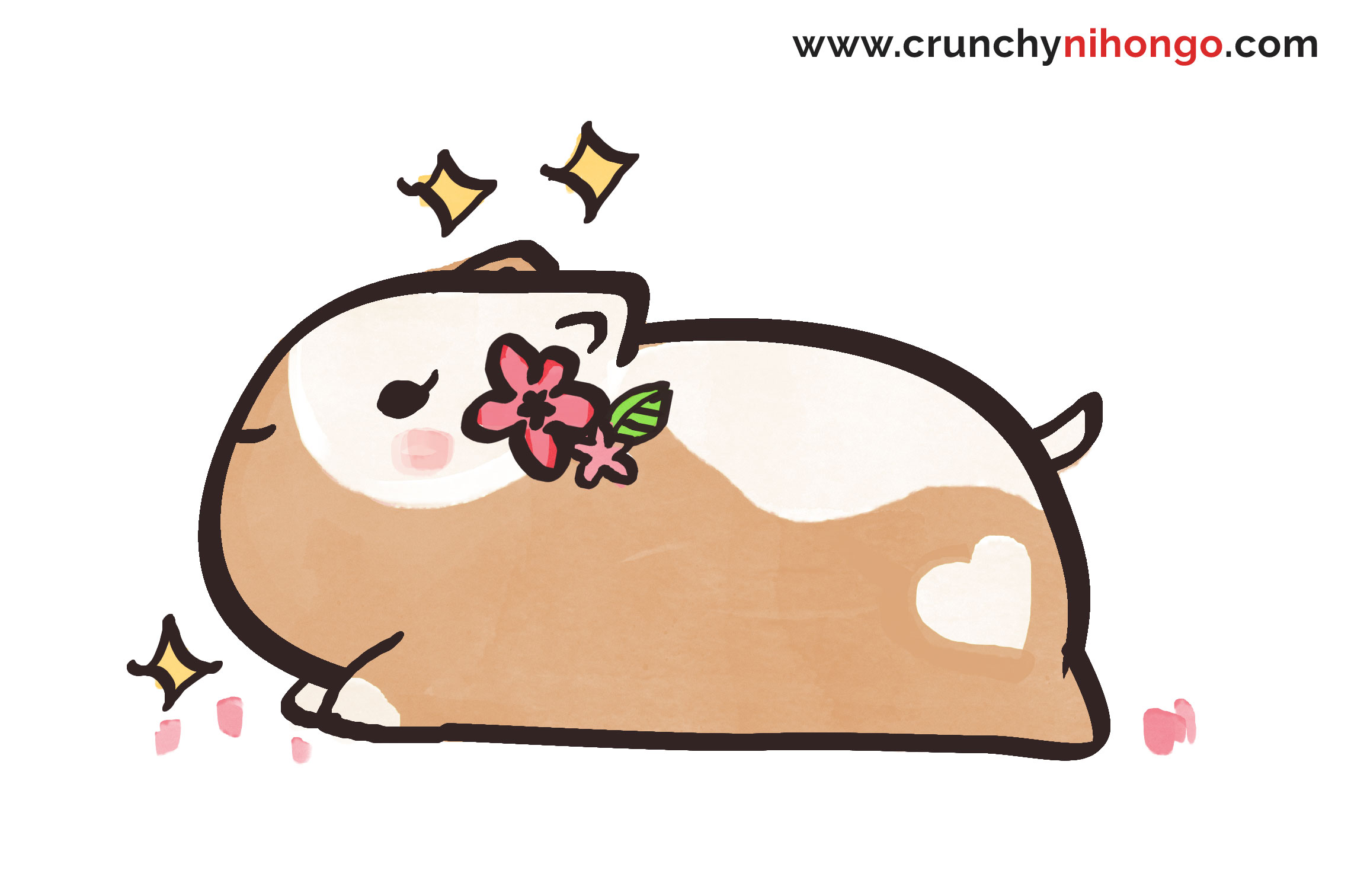
(present)
そのモルモットはきれいです
Sono Morumotto wa kirei desu
That Guinea Pig is beautiful
(past)
そのモルモットはきれいでした**
Sono Morumotto wa kireideshita**
That Guinea Pig was beautiful (past)
(present-negative)
そのモルモットはきれいじゃないです
Sono Morumotto wa kireijanai desu
That Guinea Pig is not beautiful (negative)
(past-negative)
そのモルモットはきれいじゃなかったです
Sono Morumotto wa kireijanakatta desu
That Guinea Pig was not beautiful
*all sample sentence are written as formal/polite version. To make it informal, you can drop the です.
** でした is the formal/polite version of だった
…………………………………………
BASIC ROLES OF ADJECTIVE
Now we’re going to learn the roles of adjective. First is as noun modifier.
…………………………………………
AS A NOUN MODIFIER
Noun modifier means that we are using adjective such as [BIG] to modify cat noun, so it becomes a noun with additional attribute. A BIG CAT (cat noun with big attribute)

As you can see, when using Japanese NA-adjective as noun modifier. We need to add な between the adjective and noun. Now you know as to why the な-adjective is named that way.
…………………………………………
Useful notes Did you know that you can also use noun to modify/add atribute to another noun (as in Winter Coats or Hollywood Movies) using particle の ?
Here’s some quick sample to explain how it works:
彼女 の 部屋
Kanojo NO heya
Her room
–> adding ‘her’ attribute to the ‘room’. By attaching pronouns, we give “possesion” attribute to a noun.
駅 の 近く
Eki NO chikaku
Nearby the station
–> adding ‘nearby’ attribute to the ‘station’
緑 の 本
Midori NO hon
The green book
–> Adding ‘green’ attribute to the ‘book’
Related Basic Particle も,と,や and の
…………………………………………
AS A PREDICATES
Predicate is when we use an adjective to describe a noun. As in [THAT CAT IS BIG]. Used as predicates, the only rules you need to remember is to never put だ after I-adjective.
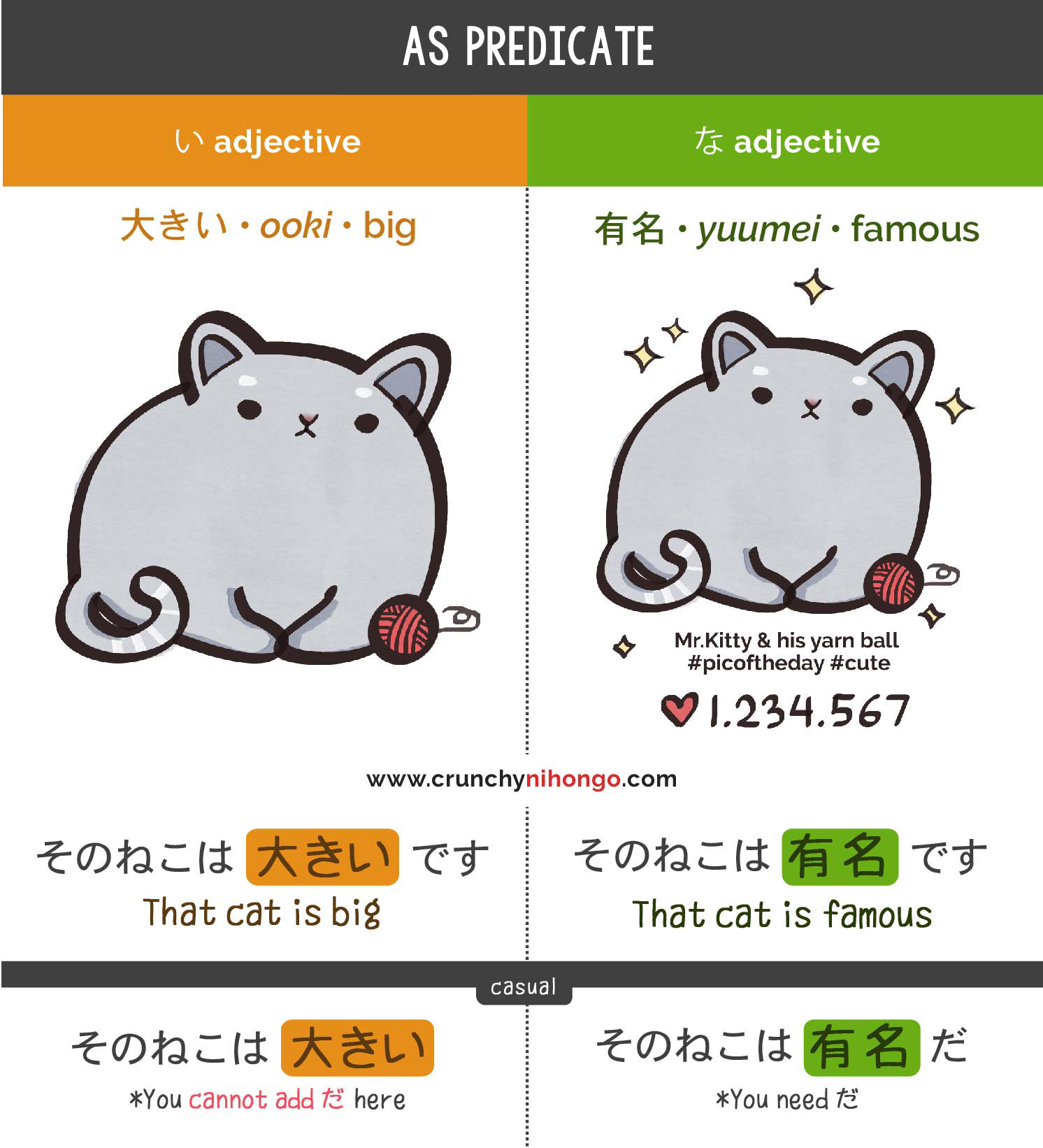
…………………………………………
AS AN ADVERB
We can create adverbs from adjective as what we can do in English (slow > slowly) and (easy >easily). Below are the rules to turn Japanese adjective into adverb

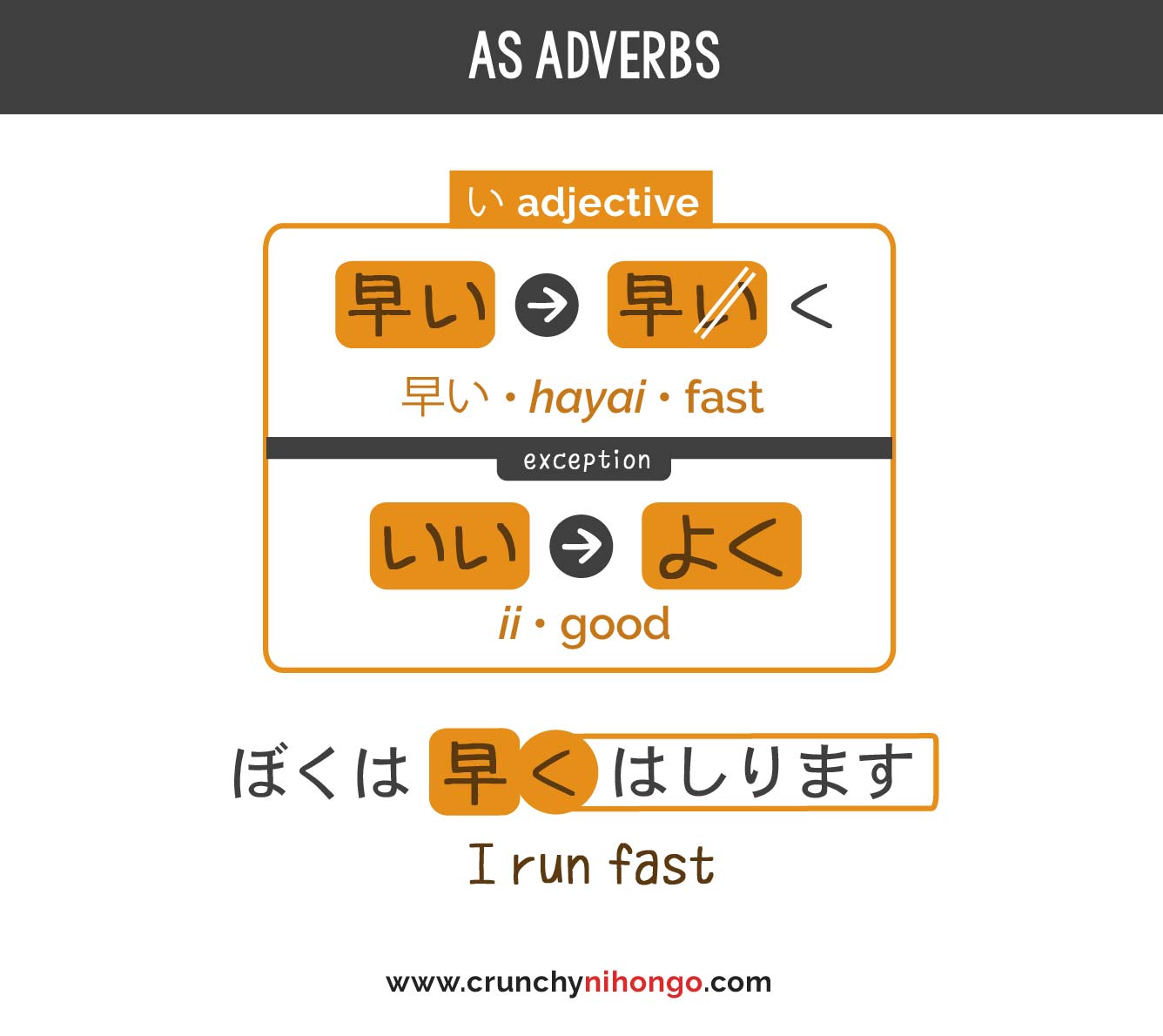
…………………………………………
CONNECTING ADJECTIVES
Connecting Japanese adjective isn’t hard. The rules are quite simple. You just need to conjugate all the adjective except the last one.
You simply remove い and turn it into くて for I-adjective and add で for Na-adjective.
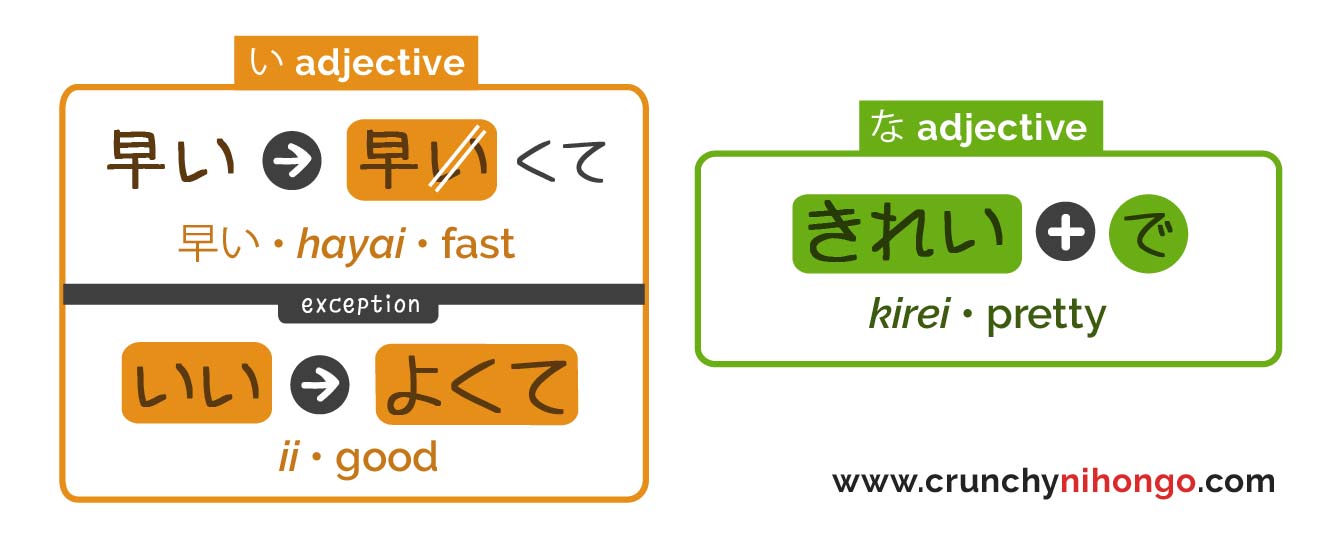
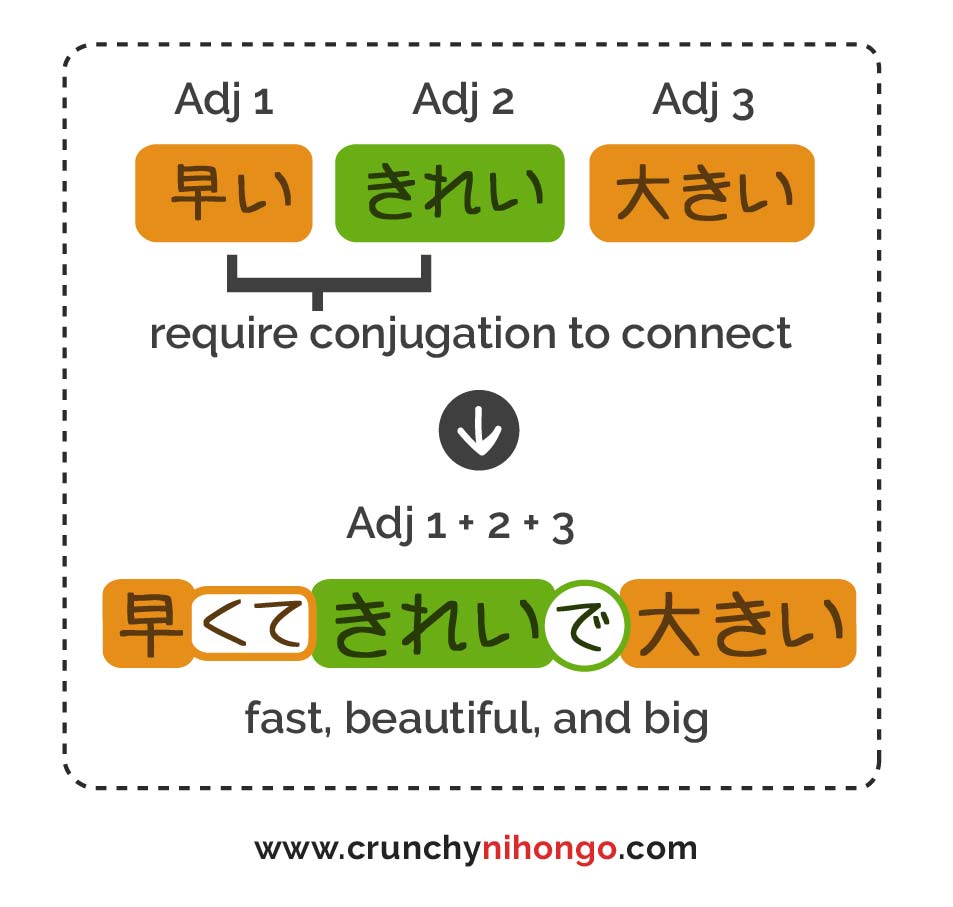 Useful notes It is not natural to combine adjective of contradicting nuance in Japanese. This means that when you are meant to praise something, you cannot said a bad attribute and vise versa.
Useful notes It is not natural to combine adjective of contradicting nuance in Japanese. This means that when you are meant to praise something, you cannot said a bad attribute and vise versa.
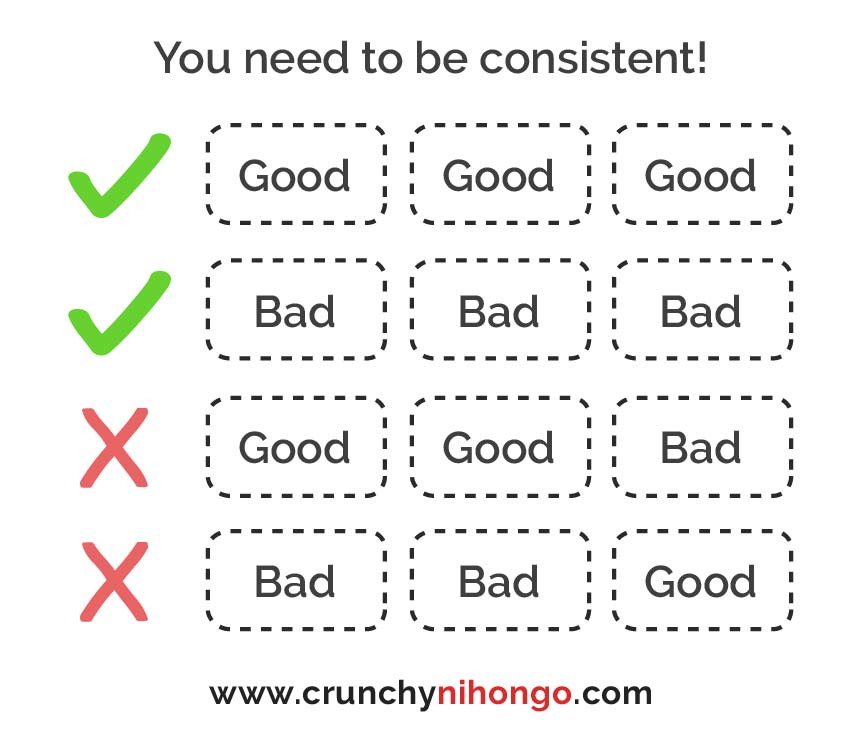
But to understand what bad/good in Japanese require experience and knowledge. For example, wide is good, while narrow is bad. So you cannot say that your room is beautiful and narrow. This is because narrow in Japanese is identical with cramp space. So saying that your room is beautiful and cramp is inconsistent. “Are you praising your room or what? I cannot understand it!” (┛◉Д◉)┛彡┻━┻
The previous case is logical, but there’s also case such as 面白い[Omoshiroi: Interesting]. This word has a nuance of “interesting since it’s a little bit strange/unusual/unexpected”. So it’s considered as a bad attribute.
Q: How to connect 2 different attribute then?
A: We use [but]. You can use ですが to connect them.
彼女はきれいですが煩いです
Kanojo wa kirei desu ga urusai desu
She is beautiful but annoying.
…………………………………………
And that’s all about Japanese adjective basics you need to know~
But for you who are looking for a thorough explanations regarding Japanese adjectives and adverbs to understand more about the logic, difference in nuance, and how they work, you can check out this book here. The Handbook of Japanese Adjectives and Adverbs
The book is written to explain the background & logic of Japanese adjective and adverbs, and the similarity / difference between Japanese and English version. So it will help you to understand how Japanese adjective and adverbs works.
But the best part is explanation regarding subtle difference of nuance between each word choice. For example, 時々 (tokidoki means once in a while) and たまに (tama ni also means once in a while, but the time period is longer than tokidoki). So you use 時々(tokidoki) when you say that you sometimes work overtime (a few days within a month) and たまに (tama ni) when sometimes means (a few days within a year).
Japanese adjectives and adverbs is one of the most important key to understand Japanese, so if you’re the type of person who need textbook reference to guide you to study Japanese, The Handbook of Japanese Adjectives and Adverbs is one of the book you should read.
…………………………………………
ADDITIONAL INFORMATION ABOUT ADJECTIVE
…………………………………………
OOKII vs OOKINA & CHIISAI vs CHIISANA
You might hear words similar to OOKII and CHIISAI, which are OOKINA and CHIISANA. What make them difference?
Q: Since they have Na, does it mean that they are Na-adjective?
A: NOPE. Just think of them as an adjective which posses an unusual behaviour, and you only need to remember what you can do with them. They can only be used as NOUN MODIFIER.
This image below will help you to understand the difference between 大きい and 大きいな

…………………………………………
TIPS TO DIFFERENTIATE I-ADJECTIVE AND NA-ADJECTIVE
Now to answer one of the most famous questions…
Q: How do we know if an adjective is the I-adjective or na-adjective?
A: There are some things that can help you to know, here’s below:
1. For 100% accuracy, use your dictionary.
Useful notes Free offline Japanese dictionary you can use that have entry for I-adjective & Na-adjective : JED for Android | Imiwa for IOS
2. Most of the time, い-adjective end with い… obviously…
But you might notice that in rare case, there are some な-adjective that end with い such as きれい or きらい. But I would say… Don’t worry to much about them since they are only a few of words like this.
Useful notes In きれい, actually, if you check in dictionary, it is written as full kanji 綺麗. There is no い at all as in い-adjective 早い (hayai:fast). Most of な-adjective which seems to end with い can be easily differentiate when written as kanji.
好き (suki:like) sounds like it end with I but it really isn’t い. What we’re looking for is い (I) sound of hiragana while suki end with き (ki).
But 嫌い (kirai:hate) really do end with い. Case like this is very rare, and you will only need to deal with 嫌い for now. Just remember it as a な-adjective
Useful notes
Q: Why 好き (suki:like) and 嫌い (kirai:hate) is considered as an adjective?
A: Think of like as in when something/someone have a “desireable/likeable” attribute. As in “Something that is red”. With 好き, its “Something that you like”.
If the explanation provided above is too simple and isn’t enough for you, you can try to read The Handbook of Japanese Adjectives and Adverbs since the book best feature is explanation of stuff like this.
3. Note: Treat this one as “fun fact” only. If you get a list of common [い-adjective] and [な-adjective]. You will grasp that most I-adjective are attribute that can be seen at glance and can be measured. While Na-adjective are attribute that are more complex, can be felt with heart or what you feel about something/someone as time goes by or by experience it, and most of it are people personality .
For example, I-adjective are BIG, TALL, FAST, etc…
While, Na-adjective are LIKEABLE,SPECIAL, QUIET, etc…
…………………………………………
Happy learning!
°˖✧◝(⁰▿⁰)◜✧˖°
Please do send us message/comments to improve our content or just to say hi, we always love to hear from you~

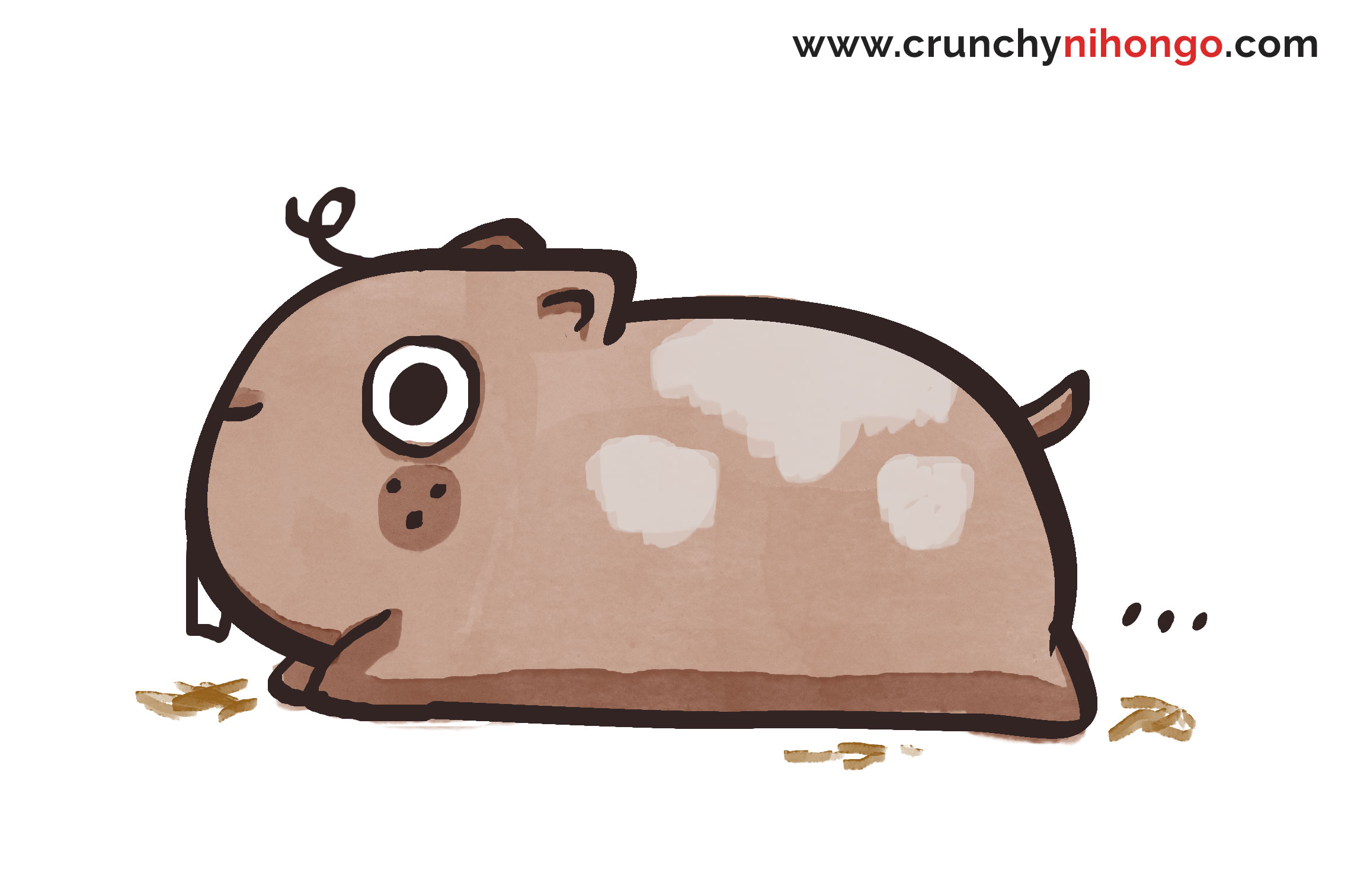
I really like these posts, the pictures between the text parts makes the reading easier! So cute ♥ I hope this website will grow up more, I’m not a really beginner but I’m studying for JPLT N5 of this year so I hope I’ll find more N5 stuffs (but also any kind of Japanese materials) ~ Thank you!
LikeLiked by 1 person
Thank you very much for your kind message, Demecchi 😊✨ yes, more N5 grammars will be added soon so please look forward to it 😸✨お楽しみください!
LikeLike
Hello! In the part of kirei in past Tense you put kireidatta instead of kireikatta in the picture
LikeLiked by 1 person
Hello! The past for Kirei as (na-adjective) is Kireidatta. While Hayai as (I-adjective) is Hayakatta. So the picture is correct while indeed there is a typo in the past tense sample sentence. It has been fixed now thanks to you 。゚✶ฺ.ヽ(*´∀`*)ノ.✶゚ฺ。
LikeLiked by 1 person
You’re welcome :). I am new to this page. Let me tell you that your page is really creative. I like the pictures and designs and the way you explain grammar with that is easier for me to understand. So it’s all thanks to you. 🙂
LikeLiked by 1 person
Thank you *big hug* I’m glad that you like it! Please look forward to future lessons 。゚✶ฺ.ヽ(*´∀`*)ノ.✶゚ฺ。 Happy learning~
LikeLike